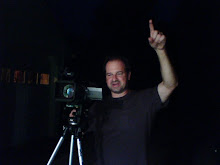One of the most valuable experiences a film or video editor can have is to work in a broadcast news environment. But the stripes one earns as a result are often torn off and trampled by the shortsighted attitudes of others.
There is too often a tendency by some to make assumptions about a person's abilities and aptitude based on jobs they have held in the past. Such is the case with both videographers and editors who have worked in broadcast. As with any form of prejudice, people are judged according to the lowest common denominator of their peers.
The perception is that people whose job involves operating equipment are nothing more than "equipment operators". Yet, cinematographers and editors in other venues, particularly feature films, are hailed as creative geniuses and given awards for their work.
This discrimination is the result of how rules in union environments are interpreted. In a broadcast union house, editors and videographers are actually forbidden from making decisions regarding content! The last time I checked, deciding content is the definition of an editor! Likewise, reporters and producers are not allowed to operate equipment, yet outside the broadcast environment they are highly respected, while exceptional photography and editing of their news pieces is attributed entirely to their "guidance". Sadly, a lot of this attitude comes from outside the broadcast environment from people who haven't actually been in those trenches and are basing their opinions on assumptions.
In the newsroom itself, reporters and producers are highly appreciative of the truly creative editors and videographers, and easily distinguish them from any "button-pushers" that may actually be on staff. There will often be a race by newsroom personnel to the side of the real artists. Reporters in particular often have extremely long days chasing stories and producing scripts. Why should they want the added burden of holding the hand of a videographer or editor? Very often when a reporter is blessed with landing one of the creative editors, they will record their track, choose the sound bites, then leave the editor to work their own magic. This saves the already overworked reporter valuable time to work on their next feature story or perform other tasks. For this reason, the union rules forbidding any crossover are really unnecessary. Everyone is just too busy to do more than one job!
Yet in less stressful and non-union environments, such as some corporate video situations, I have seen the union structure implemented. They assume editors need someone sitting behind them making all the edit decisions. In these situations that system is totally wasteful and would be far more effective overall if they hired field producers who are also editors - or vice versa like myself. A field producer who understands editing can more clearly envision the final project and plan their shots more effectively. But as I've discovered, some field producers refuse to edit because it is apparently "below them". Some of these producers actually came out of broadcast environments. I can only assume they were either saddled too often with the not-so-creative editors, or they went in with preconceived notions and saw what they wanted to see.
I have spoken to a number of other editors and videographers over the years who like myself have seen or been victimized by this concept. There was one case I had witnessed, in a non-union production house, where one of the producers was utilized as a videographer when they discovered he was also a photographer. But once he picked up that video camera, he was suddenly treated as if his IQ had dropped 50 points and was talked down to in a manner totally different from when he functioned as a producer. It was mind-boggling! Movies and TV shows that depict broadcast news environments are definitely no help. Look at how technical staff is depicted in them. Need I say more?
Yes, I do need to say more. Let's go back to the first paragraph where I mention how valuable the experience of broadcast news can be to an editor. You learn how to meet tight deadlines by paying close attention to all the footage you scan, so that in a crunch you can fill that large hole with those decent thirty-second shots you remembered. After cutting a good number of news pieces, you come to learn just how much time you need to be especially creative and how far you can actually go while easily making air.
My personal record is cutting a 90 second piece in 15 minutes - just in time for air! The reporter knew I could handle it and specifically requested me while on the road to the station. He dashed in thoroughly organized 10 minutes before the start of the 10:00 news. After belting it out, we took a breath while watching someone else sprint down the hall with the tape. It was ultimately a lot of fun! In fact, despite being nervous about working in this high-pressure environment when I was first hired, I came to enjoy it thoroughly and constantly looked forward to the next day's adventure.
All venues have some kind of deadline, but the TV newsroom is by far the best boot camp for editors!
Subscribe to:
Post Comments (Atom)

No comments:
Post a Comment